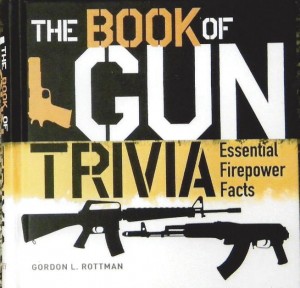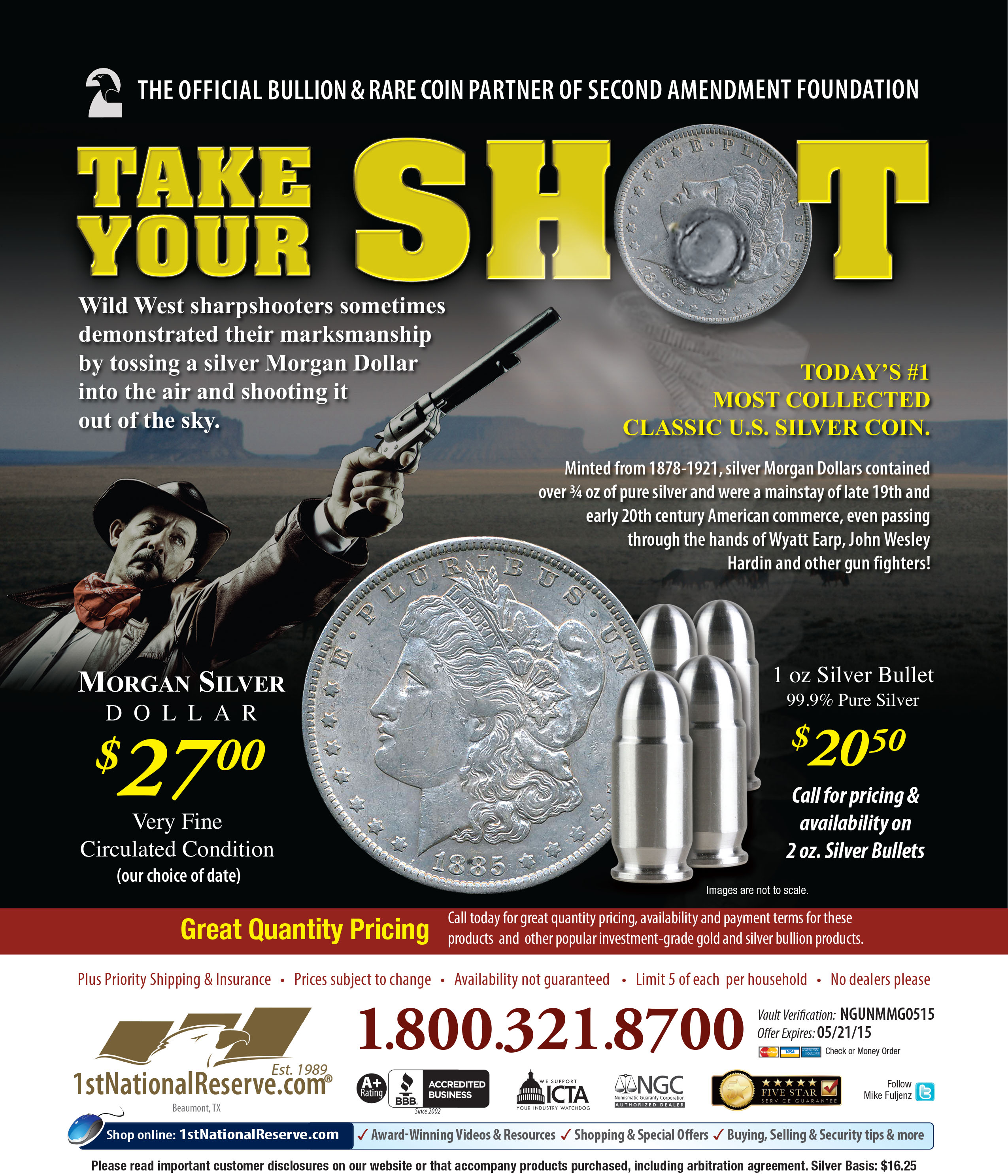Review by Larry S. Sterett
THE BOOK OF GUN TRIVIA – Essential Firepower Facts, by Gordon L. Rottman. ©2013. Published by Osprey Publishing, Dept. TGM, PO Box 3985, New York, NY 10185, online: ospreypublishing.com. Price: $14.95, plus postage. Available at most bookstores.
 This compact, 208-page hardbound volume features just what the title states, facts. In addition to an interesting foreword, some acknowledgments, and a brief listing of abbreviations and glossary, it features four chapters filled with both substantive and more trivial information. Illustrations are few—most historical black and whites—along with a number of firearm silhouettes. There is no index.
This compact, 208-page hardbound volume features just what the title states, facts. In addition to an interesting foreword, some acknowledgments, and a brief listing of abbreviations and glossary, it features four chapters filled with both substantive and more trivial information. Illustrations are few—most historical black and whites—along with a number of firearm silhouettes. There is no index.
The first chapter deals with Essential Gun Facts, and ranges from the longest serving weapons in the US Army and Marine Corps inventory through the Pedersen Device. Additional information is provided in sidebar form on orange-colored backgrounds, and specifications for half-a-dozen individual firearms are provided in the same form. (This reviewer found it interesting to learn about what some of the top US officers carried, or didn’t. MacArthur was never armed, and Patton had the most sidearms, all privately purchased. While this section was limited to US officers, Reich Marshal Goring, when he surrendered to US troops in 1945 was carrying a Model 1905 Smith & Wesson M&P .38 Special revolver in a custom-made holster. Very interesting.)
The second chapter is devoted to myths. What you may believe may be fact and it may not. Motion picture producers sometimes do take liberties with actual facts, such as Sergeant York using a M1903 rifle and a German P.08 pistol to capture his ten-dozen plus German soldiers. In reality he used an Enfield M1917 rifle and a Colt M1911 pistol to deal with the Germans. Sidebars, etc., are also used in this and chapters three and four, as are specifications.
Chapters three and four feature ‘ammunition,’ history, plus facts and myths. In Chapter Three, for example, the military manufacturers’ headstamps currently in use are listed, along with metric and British cartridge designations, how gauges of shotguns are determined, the smallest caliber firearms, and much more. (For those readers interested, the smallest caliber centerfire ammunition manufactured was the 2.7mm (0.106-inch) Kolibri, and the smallest commercial rimfire ammunition was the 2.34mm (0.092-inch) SwissMiniGun. Both the Kolibri and SwissMiniGun were keychain-size handguns, with limited range and knockdown power.)
The final chapter dispels some of the difficult to kill myths relating to ammunition. All 7.62mm cartridges are not interchangeable. The former Warsaw Pact countries used five different 7.62mm cartridges, none of which would be used in arms chambered for the 7.62x51mm NATO round. Wood bullets, poison bullets, and tracer myths are also covered, even though they still seem to be believed by the non-informed. (Wooden bullets were frequently used in blank cartridges at one time, and while not usually lethal, they can be at close range. Any object propelled against soft flesh at close range can cause damage, even the card wads used in some handgun blank cartridges, such as those used in movie scenes and starter revolvers for track events.)
This is an interesting volume, and worthy to have on any firearm owner’s reference shelf. It may not provide answers to all questions, but it definitely provides answers to many. What more can a reader ask?




